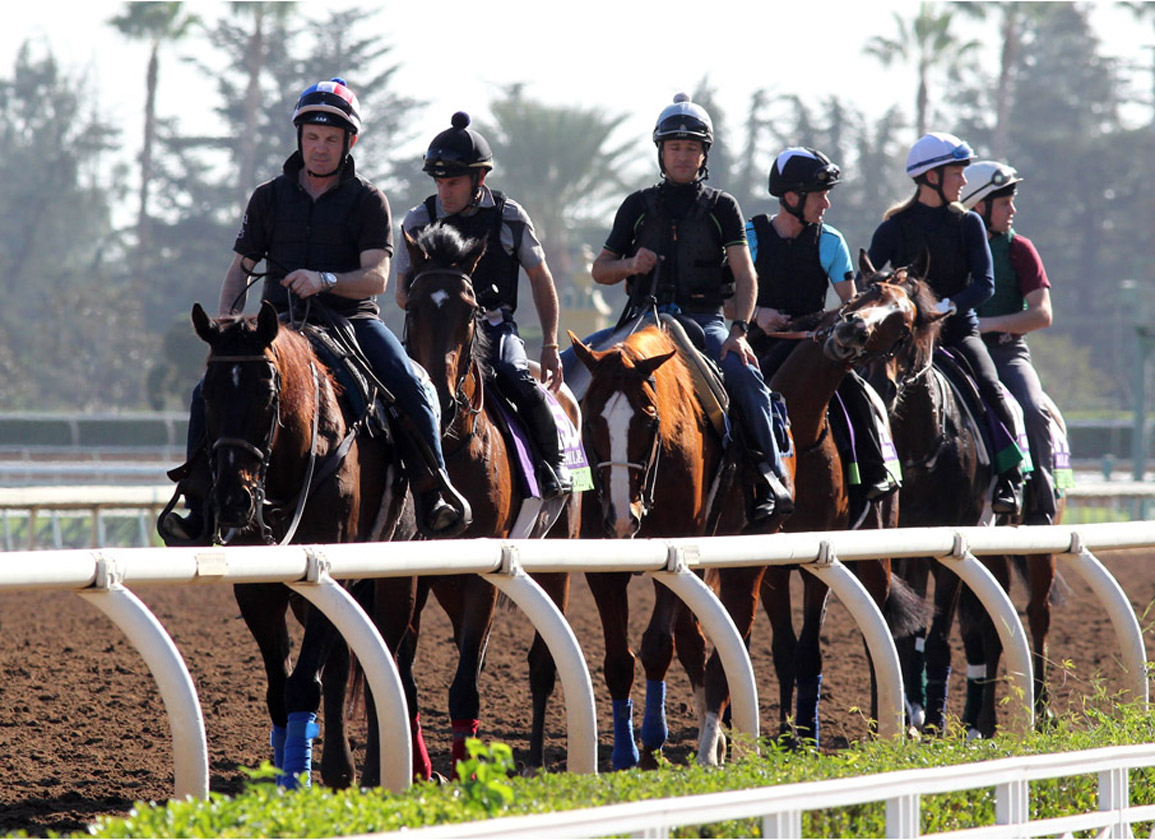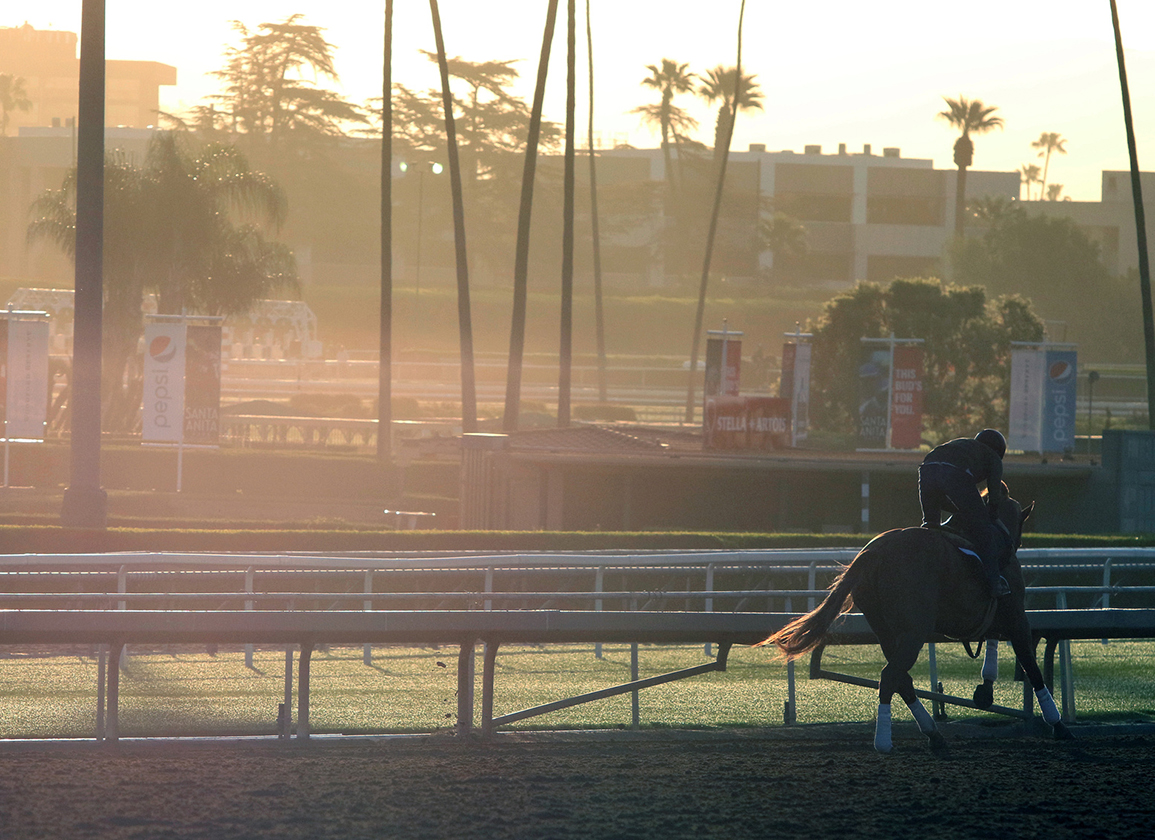Kristian Rhein, a suspended veterinarian formerly based at Belmont Park, on Tuesday changed his plea to guilty on one felony count within the federal government's sprawling prosecution of an allegedly years-long conspiracy to dope racehorses.
Speaking in open court, Rhein also directly implicated five others, most notably co-defendant Jason Servis, the now-barred trainer who was his regular client and allegedly administered performance-enhancing drugs [PEDs] on practically every Thoroughbred under his control.
“I, along with Jason Servis, concealed the administration of SGF-1000 and clenbuterol from the owners by billing for other services and dispensables to avoid scrutiny by the owners,” Rhein said during an Aug. 3 teleconference before Judge Mary Kay Vyskocil of United States District Court (Southern District of New York).
“I, along with Jason Servis, were leaders and organizers [of others who performed allegedly criminal actions], which included my associate, Dr. Alexander Chan; Jason's assistant, Henry Argueta; my other associate, Juliano Suarez, and Michael Kegley [Jr.],” Rhein said.
Also revealed for the first time during Tuesday's hearing was the staggering amount of purse money-$26 million-that federal prosecutors are alleging Servis won illegally by racing horses purportedly hopped up by drugs that Rhein's practice provided.
For perspective, that massive earnings figure represents half the $52 million in purses that Servis's trainees bankrolled during his entire two-decade training career between 2001 and 2020.
And that $26-million amount will be additionally significant when Rhein gets sentenced Dec. 2.
That's because according to federal sentencing guidelines, ill-gotten monetary gains within the $25 million to $65 million range will escalate the nature of Rhein's offense by “22 levels,” assistant U.S. Attorney Sarah Mortazavi told the judge.
“I am not a part of the winnings,” the 49-year-old Rhein was quick to add.
Vyskocil then curtly interjected to clarify that was not what she was asking the defendant to answer. She said she only wanted to confirm whether Rhein was “freely and voluntarily agreeing” that prosecutors were presenting $26 million as the proper amount of Servis's purse winnings. Rhein then said yes.
As part of a plea agreement, Rhein on Tuesday withdrew his initial plea of not guilty from 2020 and instead pled guilty to one count of drug adulteration and misbranding for use in the covert doping of Thoroughbred racehorses.
Vyskocil said that Rhein's maximum penalty is a term of imprisonment up to three years, plus supervised release for up to one year. The maximum fine allowed is $10,000, or two times the amount of gross pecuniary gains or twice the loss to others as result of offense, whichever is greater.
As part of his plea agreement, Rhein also has to forfeit to the U.S. the criminally gained proceeds that are directly traceable to his offense, which he agreed totaled $1,021,800. Vyskocil said he must pay at least $671,800 of that amount before his sentencing date in four months.
Rhein also agreed to pay $729,716 in restitution to an undisclosed list of other victims. Mortazavi said prosecutors will file with the court an under-seal list of exactly who those victims are at the time of Rhein's sentencing.
As she has asked other defendants to do when they have changed their guilty pleas in her court, Vyskocil asked Rhein to detail exactly what he did to constitute his crimes.
“From at least in or about December 2016 through at least in or about March 2020, in the Southern District of New York and elsewhere, I marketed and distributed in interstate commerce misbranded and adulterated drugs to trainers and veterinarians of Thoroughbred racehorses,” Rhein said.
Rhein added that this was “an effort to assist those trainers and veterinarians to improve the performances of racehorses through the administration of such misbranded and adulterated drugs while avoiding detection of that scheme by federal and state drug regulators.”
At a later point in the hearing, when Vyskocil asked Rhein if he understood how his professional standing as a veterinarian would play a role in his sentencing, Rhein admitted that he did.
“Because I was a veterinarian, I am held to a much higher standard as a professional, and I betrayed that trust to the people [who owned] not only the horses that I was taking care of, but also to all the people that listened to me and know me and trust in my professional opinion,” Rhein said.
“When you did all of what you described to me,” Vyskocil asked, “did you know that what you were doing was wrong?”
“Yes, your honor,” Rhein replied.
“And did you know at the time that what you were doing was illegal?” Vyskocil asked.
At that point Rhein paused and said he needed to confer with his attorney before answering. After a brief off-camera pause, Rhein replied, “Yes, your honor, I did.”
Rhein began his veterinary career in 2002 and soon specialized in racehorse treatment. He started a practice at Belmont Park in 2015. In 2017, he partnered to form a bloodstock services company, Empire Thoroughbreds.
Rhein is now the fifth of 28 defendants to plead guilty to charges in the federal government's prosecution of an alleged “corrupt scheme” to manufacture, mislabel, rebrand, distribute, and administer PEDs to racehorses all across America and in international races. Indictments were unsealed to coincide with a flurry of coordinated arrests nationwide on Mar. 9, 2020.
One defendant, the veterinarian Scott Robinson, has already pled guilty to conspiring to unlawfully distribute adulterated and misbranded drugs for the purpose of doping racehorses. In March 2021 he was sentenced to 18 months in prison, and also had to forfeit $3.8 million he gained from his illicit actions.
Scott Mangini, Robinson's business partner, pled guilty in April to conspiring to unlawfully distribute adulterated and misbranded drugs with the intent to defraud and mislead. The government contended that Mangini, a former pharmacist whose license was suspended in 2016, sold and shipped millions of dollars worth of “blood builders” used by trainers to increase red blood cell counts and improve a horse's endurance. He is to be sentenced Sept. 10.
Sarah Izhaki, whose role involved selling misbranded versions of Epogen, pled guilty to the same charge as Robinson and in June was sentenced to time served plus three years of supervised release. Vyskocil could have sentenced Izhaki to a prison term of 12 to 18 months, but opted for the more lenient punishment due to extenuating circumstances that included Izhaki's poor health.
Kegley, an independent contractor for a Kentucky-based company called MediVet Equine, pled guilty in July to one count of drug adulteration and misbranding. He said at his plea hearing that one of those drugs was SGF-1000, and that “I knew that the product was not manufactured in an FDA approved facility, nor was it approved for sale by the FDA.” He is to be sentenced Nov. 22.
Barred trainer Jorge Navarro, who along with Servis is the most notorious and prominent defendant in the alleged doping conspiracy, will have an Aug. 11 change-of-plea hearing at which he is expected to alter his initial “not guilty” pleas to two indicted counts. He is accused of a years-long PED doping program that allegedly involved frequent use of SGF-1000.
According to the initial March 2020 indictment, Rhein was one of those veterinarians to whom Kegley routinely sold SGF-1000, and prosecutors allegedly have Rhein on tape in July 2019 bragging that he sold “assloads” of SGF-1000.
In a separate wiretapped conversation, from June 2019, Rhein allegedly told Servis that the purportedly doped MGISW Maximum Security wouldn't trigger a positive for SGF-1000 because “they don't even have a test for it in America.”
At one point during Tuesday's hearing prior to Rhein's guilty plea, Vyskocil asked Mortazavi to outline the evidence that would be brought against the him so the defendant would know what he was up against if his case instead went to trial.
Mortazavi said the government's proof included:
“Wire intercepts of calls involving Kristian Rhein and others promoting and discussing SGF-1000, including the fact that that drug was untestable on drug tests, and including discussions on relabeling the product once there was increased law enforcement and regulatory scrutiny of the legality of using SGF-1000, particularly on racehorses.
“We would have evidence of controlled purchases of SGF-1000 made before and after there was increased law enforcement scrutiny of the drug, in which the labelling had been altered later, so that the drug was described as 'homeopathic' in order to specifically avoid regulatory detection.
“Archived web pages advertising SGF-1000 on the website of the manufacturer; promotional materials stating that SGF-1000 contained, among other things, multiple growth factors, and that it operated as a vasodilator.
“We would also have evidence of…false veterinary bills altered by Dr. Rhein's veterinary practice for racehorse owners, in which charges for SGF-1000 were hidden, as well as charges for the prescription drug clenbuterol distributed to trainers without a valid prescription….
“We would have proof of shipment of SGF-1000 into the U.S. from overseas into MediVet's distribution center in Kentucky. And we would also have shipment records of SGF-1000 across the United States,” Mortazavi summed up.
The post Rhein Implicates Servis When Switching Doping Plea to ‘Guilty’ appeared first on TDN | Thoroughbred Daily News | Horse Racing News, Results and Video | Thoroughbred Breeding and Auctions.




